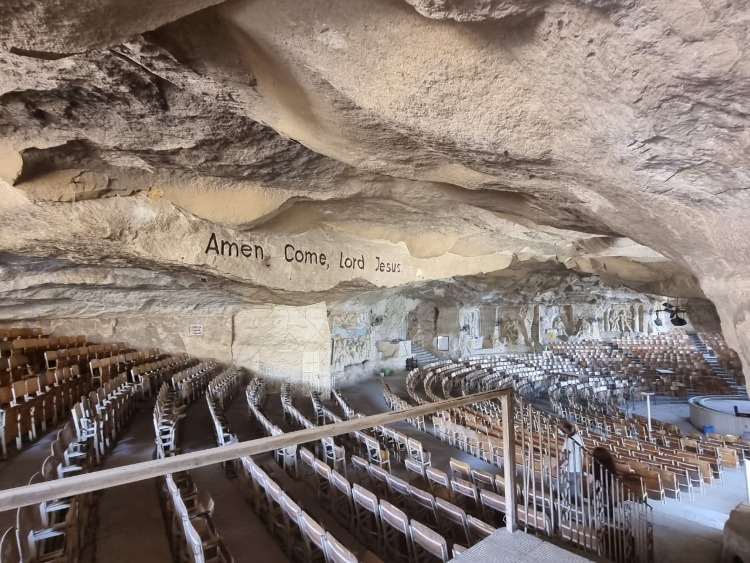Hidden within the mountains of Cairo’s El Mokattam is St. Simon “The Tanner” Monastery; several churches make up the Coptic structure with the most famous among them being Saint Simon the Tanner Hall. Unlike other churches within Cairo, the entire monastery is considered a unique architectural maverick and so my curiosity peaked. I wanted to unravel the story behind how and why Mokattam’s mountains were carved out in the 70s only to be made into the monastery that stands there today.
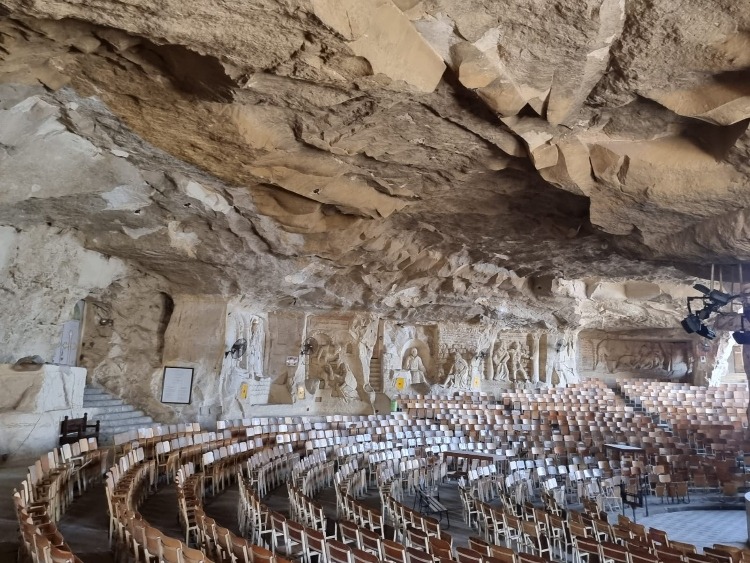
Traversing Garbage City
It all started with an Uber driver, named Gergis Rasmy. We found ourselves talking our heads off the entire ride, all the way to the monastery. Rasmy stressed how it’s a rarity for an Uber driver to drive all the way there as you’ll have to drive through the narrow roads of Mansheyat Nasir famously known as Garbage City. It all made sense once we reached its entry point; a high ramp cutting off from the main road. TukTuks or rickshaws were traveling up and down the ramp while large discarded koshari carts (a famous Egyptian dish) and donkey-pulled garbage carts dotted its edges, leaving barely any space for Rasmy’s red Nissan.
The roads kept getting narrower as we meandered through them. It did feel like we were entering a small city, separate from Cairo. Old brick exposed buildings on the left and right housed small local coffee shops called ‘Qahwas’; bakeries displaying fresh baked small baladi bread, stacks of shiny vegetables, chickens clucking from within cages at butcher shops, and a young boy selling grilled corn on a cart. As we got closer to the monastery, we began to notice women wearing thick gloves sitting among garbage sacks, sifting through their contents, to be recycled later on.
Ramsy began to mention how the residents of Garbage City adore and take pride in their neighborhood. There’s an unspoken love between each neighbor. If any resident is in trouble, everyone will pitch in to help. It’s important to take note of the residents as they played a large role in shaping the monastery.
Entering Tanner Cathedral
Ramsy was kind enough to join me throughout my exploration of the monastery. At the gate, entry was free. Right from the start, once you reach the beginning of the monastery, you’ll notice that the mountains of Mokattam are already etched out with intricate illustrations.

Ramsy explained that each one tells a legendary story of Jesus Christ, including the moment when he walked on water.
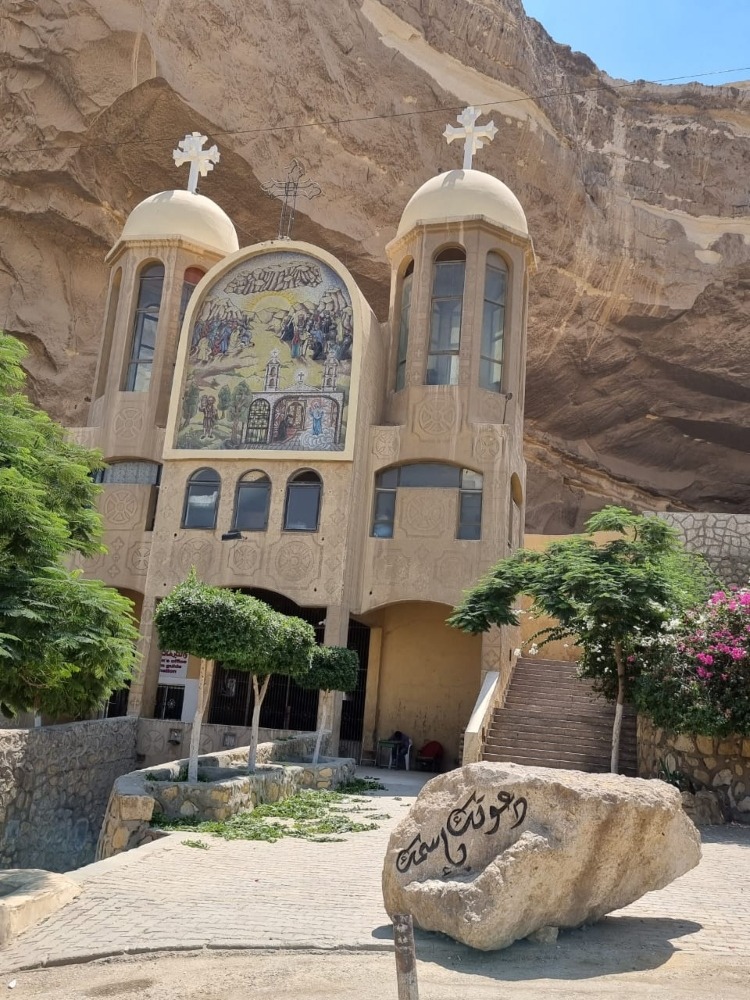
He then pointed to the entrance of St. Simon The Tanner Cathedral which was marked by a small chapel. We had to traverse a dark tunnel running below the chapel to get to the cathedral. Reaching its end, a stream of light blurred our eyes before we were met with the sunbaked 20,000 seats of the cathedral.
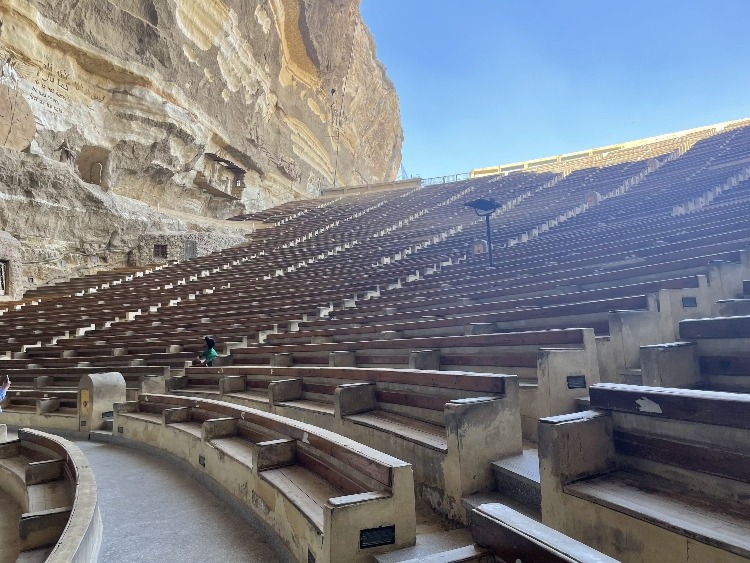
Before I could take in the view, I heard the coarse voice of a man speaking out. He was an old bookseller, squat in height by the name of Botros Wahba. He was telling us some information and stories related to St. Simon The Tanner Cathedral. I took it as an opportunity to ask him about how it all started.
Learning the Monastery’s Origin Story
Standing by one of the many pews, Wahba and Rasmy began to tell its story. It is important to note that most of the stories told by Rasmy and Wahba were illustrated in another church I visited within the monastery, known by the name of St. Simon The Tanner Hall. We visited it after our talk with Wahba at St. Simon The Tanner Cathedral.
The story started off with Wahba and Ramsy pointing to a place behind the entire monastery, stating that the very first church in Garbage City was built there. It was originally made of tin and cared for by a minister called Saaman during the 1970s. Its residents, mainly composed of Coptic Christians who moved to Mokattam in 1969 were struggling and did not have that harmonious community feeling of today.
One day, the minister, Saaman, was praying and suddenly, there was a powerful gust of wind that made all the paper and trash lying nearby fly around. Then he found himself holding a piece of paper that had a verse from the bible. Some of it said, “Do not be afraid; keep on speaking, do not be silent.” Saaman took it as a message from God to keep on preaching and do it with all his heart. He needed a church to continue his efforts.
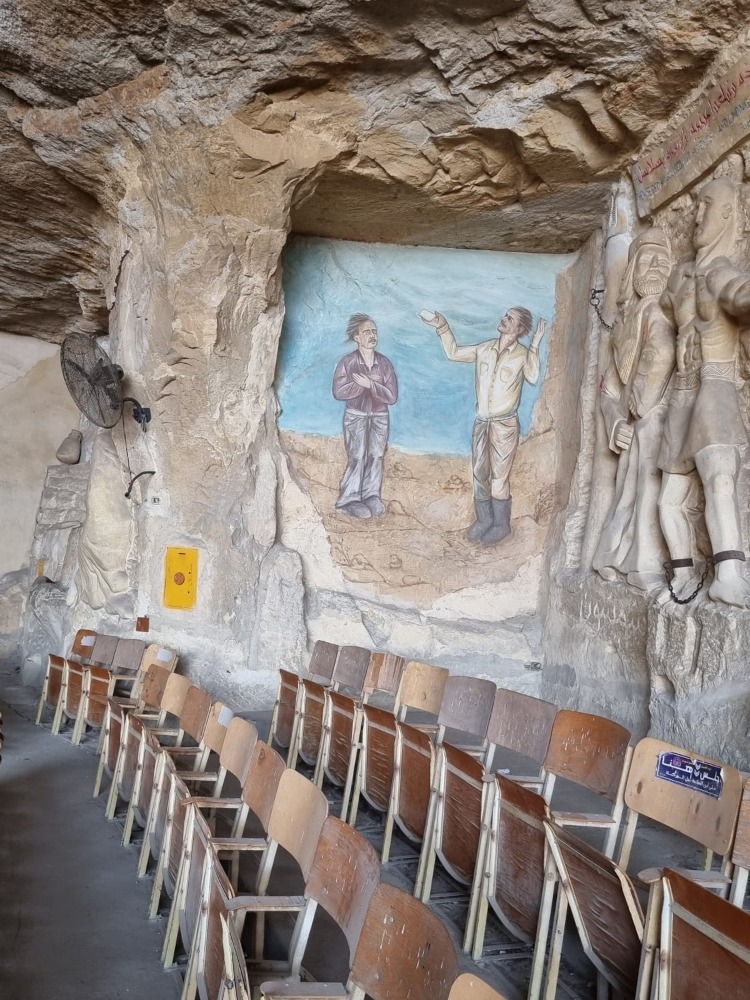
That is how the tin church got built and over time the tin was replaced with brick, and more and more residents of Garbage City began to visit it. It became a central hub for the entire community. Other than the church, at that same time, all the residents pitched in to begin work on the monastery itself.
The entire monastery was named after Saint Simon The Tanner, a man who was alive during the Fatimid period of Egypt. According to Wahba, Saint Simon was a simple shoemaker and a very generous man. He would give out water to the people of his village all through the night.
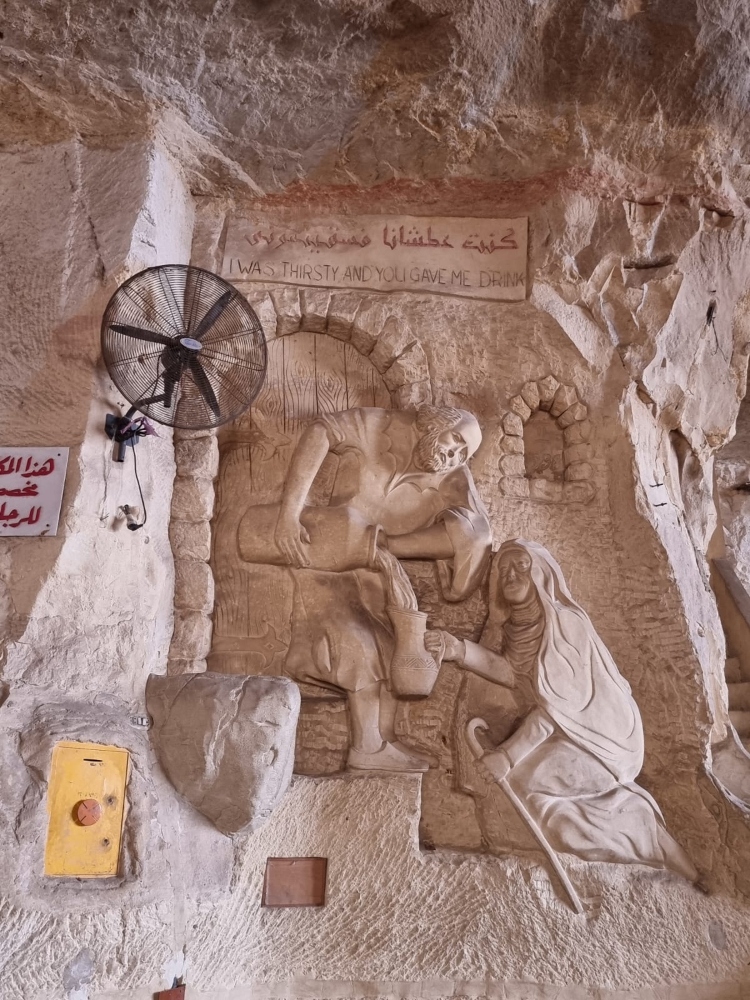
It is said that he was the reason why the Mokattam mountains were highly revered by the Christian community. Based on Wahba and Rasmy, it was mentioned that Saint Simon transferred a group of mountains from an area called el Aataba in Cairo all the way to Mokattam during the 10th century; hence the monastery is named after him.
Discovering How It Was Carved Out
The beauty behind the monastery all lies in how it came to be. Wahba said that most of the Garbage City residents took part in its construction. It took them over a decade and for good reason.
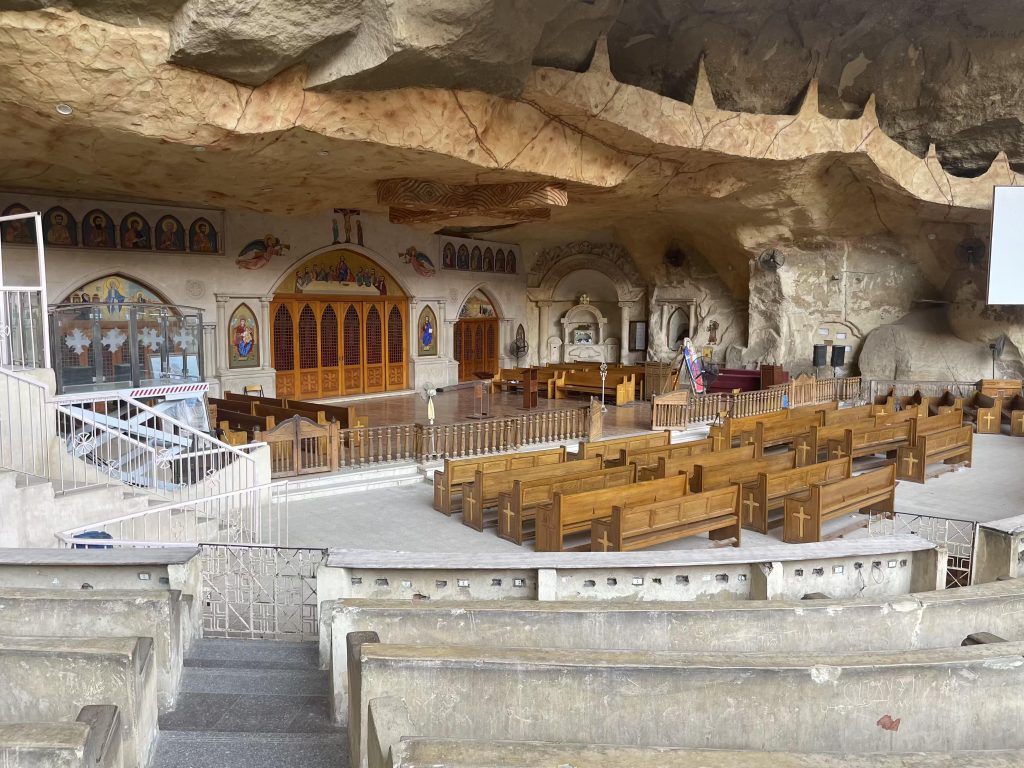
During that time, dynamite was not allowed to be used by residents of the neighborhood which slowed down the excavation process. So, the residents had to wait until the month of Ramadan as during sunset, the way to announce that it’s time to break the fast, a cannon would be fired. To mask the sound of the rocks blasting, the residents timed the firing of the cannon with the bursting of the dynamite. Imagine that they did this once a day, for a whole month during an entire year. According to Wahba, after 13 years, a total of 1.5 million tons of rocks and sands were blown up.

The effort behind this historic landmark is significant, mirroring the devotion of its community. After this day at the St. Simon Monastery, it became clear that this is indeed a hidden gem beyond the streets of the Garbage City that is just waiting for people to discover.
We Said This: Don’t Forget… Five Churches To Visit This Christmas In Cairo


